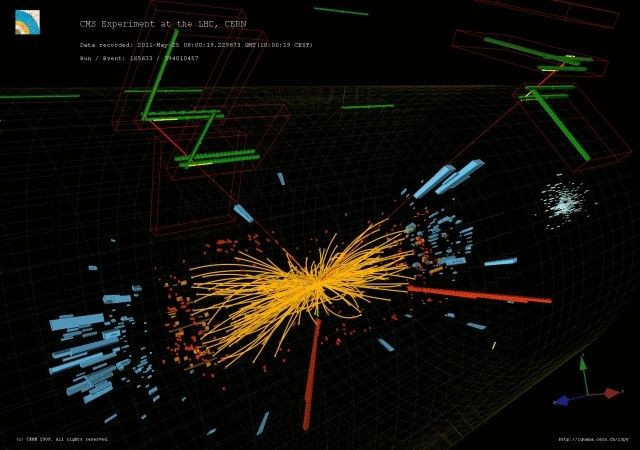Higgs Boson Discovery Nears Confirmation; Analysis 'Strongly Indicates' 'God Particle' Was Found: CERN

Just about the same time the white smoke was going up in Rome announcing the election of a new pope, a triumphant cry rose from a scientific meeting 500 miles away: Habemus Higgs boson!
At a conference in the town of La Thuile, located near the Italian border with France, scientists from the European Center for Nuclear Research (CERN) said that the latest data culled from the Large Hadron Collider strongly indicate that researchers indeed discovered the Higgs boson last July.
But the book is not 100 percent closed.
“It remains an open question, however, whether this is the Higgs boson of the Standard Model of particle physics, or possibly the lightest of several bosons predicted in some theories that go beyond the Standard Model,” CERN said in a statement. “Finding the answer to this question will take time.”
The Higgs boson was first proposed as a theoretical particle in the 1960s as an answer to the question of why other subatomic particles have mass, and why electromagnetic force has a much longer range than the weak nuclear force, which is responsible for radioactive decay. The Higgs boson, sometimes nicknamed “the God particle,” is thought to be a particle with no spin or electric charge.
Researchers aligned with two of the biggest detectors at CERN, ATLAS and CMS have been sifting through measurements for the Higgs candidate, seeing if it behaves according to theoretical predictions. Most of the data indicates that the particle has no spin, and that its mirror image behaves the way it ought to, according to the Standard Model of physics.
“The preliminary results with the full 2012 data set are magnificent and to me it is clear that we are dealing with a Higgs boson, though we still have a long way to go to know what kind of Higgs boson it is,” CMS spokesperson Joe Incandela said in a statement.
To further confirm that the particle really is the Higgs boson, scientists at CERN have to measure the rate at which the boson decays into other subatomic particles. Since it takes about 1 trillion proton-proton collisions on average to even detect the particle likely to be Higgs, locking it down will still take more time and data.
Even if the candidate particle is confirmed to be the Higgs boson, it’s not the end of the story.
“While the Higgs boson discovery provides an explanation of where mass comes from, what it does not explain is how those values of mass are generated,” College of William & Mary physicist Marc Sher said back in July.
The Higgs boson is thought to generate an invisible field known as, appropriately enough, the Higgs field. Subatomic particles like protons and electrons gain mass by interacting with this field, but it's still not clear why certain kinds of particles interact differently, resulting in different masses.
In February, the LHC went offline to prepare for two years of upgrading work. When the collider boots back up in 2015, its power will nearly be doubled. But the hordes of scientists working at CERN aren’t going on vacation – they’ll still be sifting through reams and reams of data collected over the past three years.
“It’s absolutely not time off,” Dave Charlton, the deputy spokesman for ATLAS, told Nature in February.
© Copyright IBTimes 2025. All rights reserved.





















